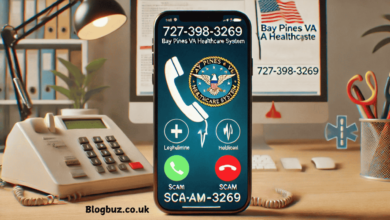What to Look for When Hiring a Dedicated Development Team

Startups and companies looking to develop their own unique software applications and technology products could be wise to assemble a committed development team. However, you must choose the right development partner – a group of people with the necessary skills to deliver what you want and who can collaborate well with your internal staff.
As you evaluate potential development teams like SPD Technology, here are the key factors to consider:
Technical Expertise
First and foremost, make sure that the team has expertise across the technology stack your project requires, be it web development, mobile app development, AI/ML engineering, IoT solutions, AR/VR, etc.
Some key questions to ask:
- Can you share your experience with relevant programming languages and frameworks? If it’s a complex web app, you’ll want developers who know JavaScript, Python, Ruby, etc.
- Do you have experience building mobile apps with Swift/Objective-C (iOS) and Java/Kotlin (Android)?
- Have you worked on machine learning projects leveraging languages like Python and R?
- Does your team have experience with modern frameworks like React, Angular, and Node.js?
- How familiar are they with cloud platforms like AWS, Google Cloud, or Azure?
Review the past work of a team to confirm that they have delivered similar solutions using the same technology in the past. They should have technical depth in their portfolio.
Communication and Collaboration Skills
Of course, evaluating the technical competence of engineers is easy, but don’t forget about soft skills. How well and often does the team communicate? Do they feel comfortable working together using tools like Slack, Trello, and GitHub?
It’s important to be able to align closely across time zones, keep stakeholders updated, provide transparency into the issue, and proactively troubleshoot problems. After all, you don’t want to outsource your product to a disjointed experience like tea.
Ask questions about their communication protocols, project management practices, and the way they develop trust and shared ownership of outcomes.
Quality and Testing Processes
Enterprise-grade software products cannot do without robust testing. Please put the dedicated team’s quality assurance practices under the same scrutiny as you would with an in-house team.
Key questions include:
- What types of testing do you incorporate – unit testing, integration testing, functional testing, etc.?
- Do you have dedicated QA resources or expect developers to test code?
- How do you leverage test automation?
- What tools do you use for issue tracking and reporting?
- How will you keep product owners involved in UAT (user acceptance testing)?
Understanding their end-to-end quality processes upfront is vital for risk mitigation down the line.
Design and UX Capabilities
Beyond technical implementation and QA, aligning on design aesthetics and user experience (UX) priorities early on will streamline development.
Some dedicated engineering teams let the creative direction be dictated by clients, while others have in-house designers and UX resources to work hand in hand on wireframes, prototypes, intuitive flows and visual polish.
Assess the ability of each team to either augment your current design talent or deliver end-to-end design. It streamlines feedback loops by having all those skill sets in one place.
Domain Experience
Most developers are trained in core languages and platforms, but specialized vertical expertise can be more difficult to come by. If you’re building software for finance, healthcare, retail, etc., then look for teams with domain experience in those areas.
For instance, fintech interfaces require specific compliance needs for data security, encryption, and accessibility requirements. To manage and store data, EHR (electronic health records) systems must be intricately integrated into legacy healthcare IT infrastructure.
To avoid a lengthy ramp-up, domain-specific regulations, data models, third-party APIs, and UX conventions should come naturally to you. Cross-validate skills with online profiles and client references.
Cultural Alignment
Technical competence is not enough if your dedicated team doesn’t fit well with the internal culture and values. Agility, creative problem solving, and the ability to pivot quickly as needs change are top of mind for startups. Many enterprise IT teams prefer more structured development life cycles with a lot of documentation.
Specify which aspects of your culture are not up for debate; it could be flat hierarchy, transparency, consensus-based decisions, etc. However, keep an open mind to differences that may help your environment in a positive way.
Cross-cultural dexterity, empathy, and adaptability are vital for global collaborations. Use initial conversations to explore those soft skills.
Team Structure and Scaling
Whether you’re starting an MVP or augmenting an existing product team, the group’s structure should reflect current goals and be able to scale as the group grows.
Key considerations around team structure:
- Core Roles. At minimum, aim for a product manager, architects, developers, QA professionals, and UX resources (if relevant). Data scientists, DevOps engineers, and security experts can provide more specialized support.
- Leadership. Look for a delivery manager or engagement lead who takes responsibility for outputs and serves as the key point of contact.
- Bench Strength. Understand policies around onboarding, training, and mentoring to sustain productivity as team composition evolves.
- Scaling Plans. You can also expect to hear how additional headcount in senior, mid, and junior roles could be added to ramp up capacity for larger product releases or new initiatives.
- Contingency Planning. Ask about backup staffing to make sure that velocity isn’t affected by unexpected attrition, leave, etc.
Getting the mix right at the start and having room to grow is imperative.
Pricing Models and Engagement Flexibility
Dedicated engineering teams come with a variety of pricing models, which makes for a more predictable budget than staff augmentation. Typical models include:
- Fixed Bid. This method works best for projects that have clearly defined requirements and timelines. The scope, cost, and timeline are locked down upfront.
- Time and Materials. Good for engagements that span longer periods of time and are more apt for product maintenance and ongoing feature development, where needs can change. This service has a fee based on the number of hours logged.
- Dedicated Team. The entire squad is allocated to your account based on the role types needed. Provides maximum flexibility to pivot priorities without overhead. Billed monthly by team size.
Clarify how the team balances dedicated support for you with the flexible use of shared resources across clients. Some may run a blended model based on the maturity of the engagement and SLAs (service contracts) involved.
Being clear on engagement terms and knowing your exit options gives helpful leverage.
Security and Compliance Assurances
Both startups and enterprises need to appraise technical capabilities, but this is not enough with the rising cyber threats. You need to look at vendor security posture, data governance, and compliance just as you would for internal teams.
Relevant questions include:
- What organizational security certifications do you carry – ISO 27001, SOC 2, etc.?
- How are source code repositories, passwords, keys, and other sensitive data secured?
- What employee screening, background checks, and security training are mandated?
- How are you set up to comply with data residency needs, GDPR, CCPA, etc.?
- What policies protect client IP and enforce confidentiality?
For many regulated industries, third-party risk management is now tightly governed. Don’t underestimate due diligence here.
Cultural Fit and Communication Channels
Teams that have strong interpersonal bonds and open communication outside of work have much more efficient day-to-day collaboration. Look at cultural compatibility and modes of preferred communication.
- Are they comfortable with casual chats over video conferencing, or do they prefer more formal meetings?
- Do they join team-building activities and social events when invited?
- What chat tools do they prefer – Slack, Teams, WhatsApp, etc.?
- How do they keep remote members engaged?
- How frequently will they provide progress reports and project updates?
Clarifying expectations upfront and aligning on norms for information sharing will minimize mismatched assumptions.
Location Advantages
Geographical proximity to your headquarters and target markets will affect the cost, the logistics of communication, and the adaptation of culture when you are sourcing dedicated development teams.
- Local Talent. Consider your in-house staff’s willingness to coordinate with remote teams in varying time zones and languages. Is 24/7 collaboration possible?
- Operating Costs. Developers based in North America or Europe will be more expensive than those in Eastern European or Asian countries. Budget accordingly.
- Target Market Alignment. Local dev teams may be a better source of contextual insights around end-user preferences for key countries for consumer apps.
- Data Residency. In healthcare, finance, etc. engineering teams may be limited to where they can operate from due to legal requirements around data storage locations.
- Infrastructure Access. Latency issues can arise if teams don’t have unconstrained access to the platforms your software leverages. Account for the potential need for VPNs.
Weigh tradeoffs across cost, access, and culture to strike the right balance.
Long-Term Partnership Potential
The dedicated team you go for should ideally be able to scale from early prototyping phases to full-scale deployment and long-term enhancement. Evaluating their appetite for such multi-year engagements is wise.
Explore questions like:
- How have you structured contracts for 5+ year partnerships in the past?
- What percentage of business comes from ongoing retainers vs. short-term projects?
- How often have clients scaled teams and scope over time?
- What value-adds can you offer startups beyond MVPs as we raise funding and expand?
A strategic alignment arises out of prioritizing fit for the long haul, not just the immediate gaps.
Summary Checklist
When you are talking to potential dedicated development teams and trying to find out which one to take on the trust journey with you from one product growth phase to another, this comprehensive checklist of evaluation criteria will help you trace back to the right technology partner:
✓ Specializations and core technical capabilities
✓ Project management rigour and communication protocols
✓ Quality focus, testing expertise
✓ Design, UX, and content creation abilities
✓ Industry experience and domain expertise
✓ Cultural alignment and collaboration tools comfort
✓ Leadership structure and team expansion viability
✓ Pricing models and engagement flexibility
✓ Information security posture and compliance record
✓ Location relevance and market alignment
✓ Long-term partnership roadmap and vision
Getting clarity across these areas will help you figure out the right mix of technical excellence and cultural affinity you need in a dedicated squad to deliver value consistently.
Systematically approaching the search process also sets up an evaluation baseline for continued governance after onboarding is complete. You can periodically map back progress and KPIs against the original expectations of service quality and delivery commitments.
Of course, there is a loss of direct oversight when hiring dedicated engineering teams, but investing the time to find the right technology partners can be the best leverage to focus product leadership energy on core competencies and leverage specialists for strategic augmentation.




